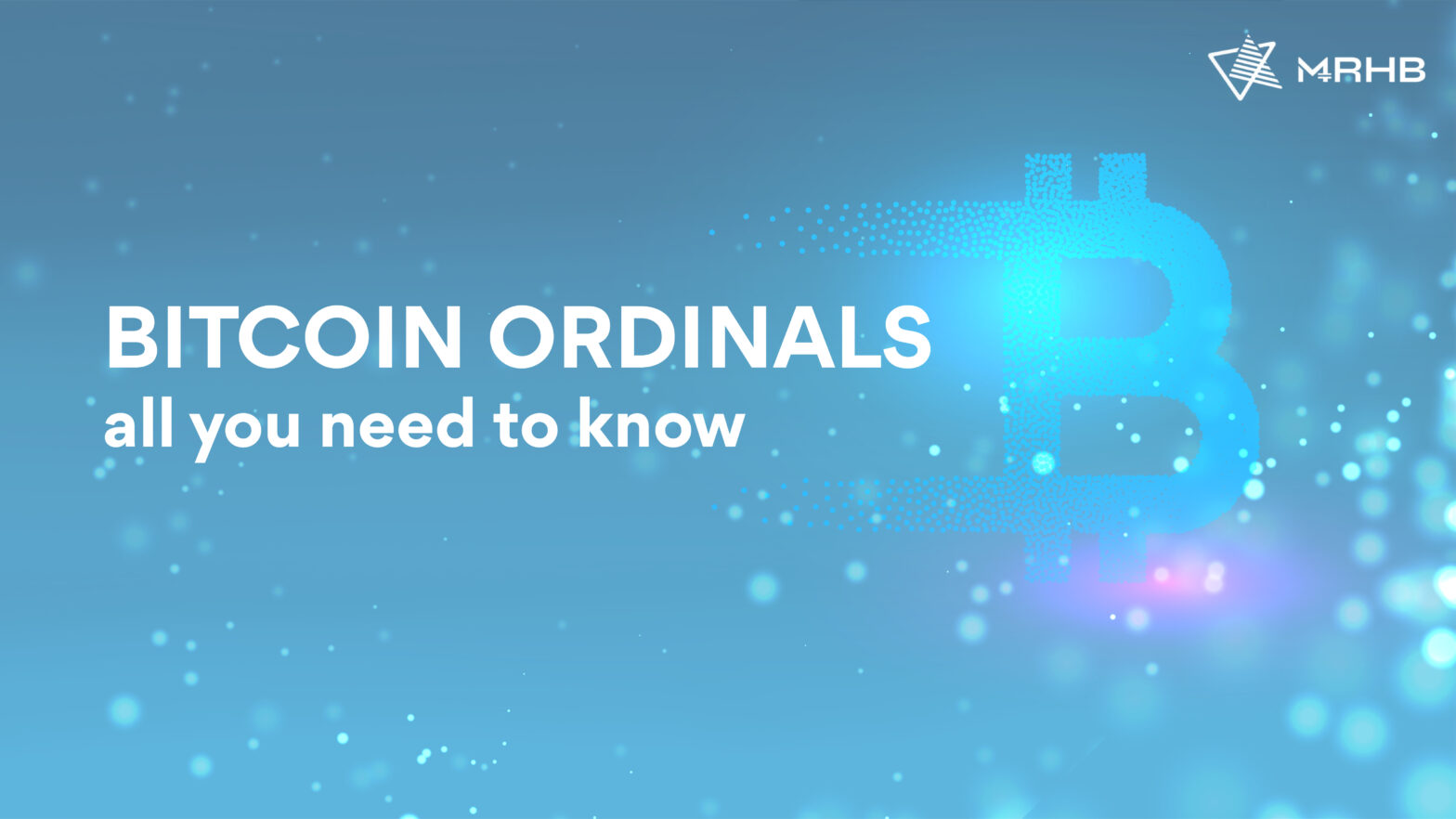Bitcoin recorded the second highest NFT sales volume in May 2023. Wait – Bitcoin NFTs? Yes, the blockchain network launched “Bitcoin Ordinals” in January and sales soared at a rapid rate in the first half of 2023. So what exactly are these Ordinals? Are they any different from non-fungible tokens? And most importantly, are they any good for halal-conscious investors?
What Are Bitcoin Ordinals?
Bitcoin Ordinals are units of Bitcoin that are ordered and inscribed with rich data to give them a unique identity. Also known as the Bitcoin NFT, a Bitcoin Ordinal is valued in terms of the text or image inscribed.
The basic value of a single ordinal equals a “Satoshi”- the smallest unit of Bitcoin. A single BTC is subdivided into 100 million satoshis, and each satoshi is worth 0.00000001 BTC.
The Ordinals Protocol and How It Works
The Ordinals protocol works by creating unique digital assets on the Bitcoin blockchain. Let us understand the key features that help in functionalizing this new asset type.
The Ordinal Inscriptions
Ordinal inscriptions are a kind of digital artifact built over a satoshi in the Bitcoin network. Each satoshi can be identified via a serial number that demarcates its position in the Bitcoin supply. Whenever we inscribe digital information on a satoshi, it acquires a distinctive identity and value.
This process is like an artist making a piece of art on a dollar bill. While the bill itself has a fixed value, the art it now carries alters its worth in real terms. This is what happens when a Satoshi is inscribed with unique data to become an ordinal inscription.
The Ordinals Protocol
The Ordinals protocol is a system for assigning unique identities to satoshis and tracking them across transactions. It relies on the Taproot upgrade introduced to the Bitcoin blockchain in 2021. This upgrade enables the blockchain to handle more complex information with a higher level of transaction security and speed.
The Ordinals protocol was launched in January 2023, opening a new realm of possibilities. Now, the block size limit for Bitcoin has been expanded to 4MB of data. This allows node operators to attach bigger pieces of data to a satoshi, leading to the creation of inscribed ordinals.
Ordinal Rarity
Each satoshi is sequentially ordered based on the time it is mined. There is an inbuilt rarity system based on the position of a satoshi in a blockchain which can be identified from its indexed parameters.
The rarity of a satoshi is influenced by a series of frequent events which causes special occurrences on the Bitcoin network. Coins mined and ordinals inscribed during certain periods on the network have rare features. Hence, they are often deemed as highly valued collectibles.
The value of data inscribed on a satoshi also plays an important role in determining its worth. Ordinals carrying distinct digital art or text pieces can become sought-after collectibles in the crypto world.
Bitcoin Ordinals vs NFTs
The Ordinals protocol has some exclusive features that set it apart from any crypto token. Still, because of some similarities in use cases, they are often confused with NFTs. Here are some key properties which differentiate Ordinals from NFTs:
Ordinals are not tokens
As both ordinals and NFTs are uniquely identifiable crypto assets, people view ordinals as NFTs of the Bitcoin world. This is quite far from reality and “Bitcoin NFT” is a misnomer. Technically, ordinals are just satoshis with information attached to them. They exist as fractions of Bitcoin on the parent blockchain. In contrast, NFTs are minted as completely new tokens on a blockchain.
Ordinals exist on-chain
The data inscribed on a satoshi is directly written and enveloped into the Bitcoin blockchain. This means that Bitcoin Ordinals are completely on-chain in nature. On the other hand, NFT metadata can be maintained on distributed storage networks such as the IPFS. Files constituting an NFT usually have reference points that exist separately from their parent blockchain.
Lack of Smart Contracts
The Bitcoin blockchain does not support smart contracts. While NFTs rely on smart contracts to implement some of their key features, Ordinals are entirely free of them. Consequently, Ordinals are not as accessible as crypto tokens that use smart contracts. So, there is no DEX platform or DeFi wallet that offers direct dealing in Bitcoin Ordinals. They are traded only through OTC trading.
Effects of Ordinals on the Blockchain Network
The introduction of Ordinals has brought a fresh wave of interest in Bitcoin. Crypto enthusiasts view this inventive digital asset as a cross between NFTs and a cryptocurrency. So, how do Ordinals impact the Bitcoin network?
Here are some of its most eminent effects:
Rise in Network Activity
Public interest in Ordinals has increased network activity on the Bitcoin blockchain. According to Glassnode data, on May 15, 59.86% of all transactions on Bitcoin applied Taproot. On 7th May, the cryptocurrency exchange Binance had to temporarily pause BTC withdrawals on its platform due to network congestion leading to a rise in gas fees.
Incentive for Growth of the Bitcoin Network
Increased activity on the blockchain will propel developers to improvise and build more features on its network. Ordinals offer new opportunities for both investors and blockchain programmers to make Bitcoin-based platforms commercially profitable. At the same time, Ordinals create a novel way to record and preserve the digital format of art and texts as inscriptions.
Improving Security
As the number of Ordinals increases, there is a surge in the average block size of the Bitcoin blockchain accompanied by a spike in transaction fees. This recent growth is a sign of the rising popularity as well as the long-term dependability of the Bitcoin ecosystem. To improve prospects, investors will be focusing heavily on upgrading the network security of the blockchain.
How to Create and Buy Bitcoin Ordinals
As a new class of digital assets, the creation and trade of Ordinals can be tricky for beginners. The technicalities involved in accessing Bitcoin Ordinals work as a barrier to entry on one hand but also hint towards the potential that awaits exploration. So, if you are a novice to the crypto arena, here is what you can do to start your Ordinal investment journey:
- Create a Bitcoin Wallet
Login into a trusty BTC wallet such as the Sparrow Wallet and create a new wallet address. You can follow the setup guide provided within the Sparrow Wallet application to make your account. - Make your wallet Bitcoin-compatible
To make your wallet Ordinals-friendly, it should be set up with a Taproot-based address that can receive BTC from SegWit addresses. Follow this tutorial to integrate Bitcoin core into your wallet, which is needed to transact with ordinal marketplaces. - Inscribe your own ordinal with Gamma
Gamma is an ordinal inscription service that lets you create ordinals without needing to code. Connect your BTC wallet to Gamma and follow its simple guide to create and deliver your Ordinals successfully across the Bitcoin network. Gamma also lets you track and view the status of your inscriptions so that you can stay updated about their status. It asks for an affordable BTC transaction fee and gives customizable service fee options for users.
Are Bitcoin Ordinals Halal Crypto?
Now that we are aware of how Ordinals work, their use cases and future profitability can be gauged. Despite being a brand-new invention, their sales show the faith that the crypto community has in its worth.
Experts have confirmed Bitcoin as a halal cryptocurrency, but what about Bitcoin Ordinals?
To answer this question, we need to look at what exactly goes into creating an Ordinal. In its most basic form, a satoshi represents a fraction of Bitcoin and can be seen as neutral in terms of morality. With regards to the inscriptions, what determines their ethical legitimacy is the nature and underlying message of digital information stored in them. Similar to NFTs, as long as the data inscribed into an Ordinal does not contain negative content that contradicts Sharia principles, they may be considered permissible. As such, the permissibility of Bitcoin Ordinals is on a case-by-case basis.

